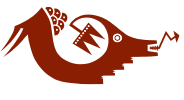Truth and Power in American Archaeology
By Alice Beck Kehoe
Alice Beck Kehoe, archaeologist, ethnohistorian, and author/editor of 21 books, provides an eye-opening overview of methodological and ethical issues in American archaeology in the last 30 years through her broad-ranging, previously unpublished essays. She explores archaeology’s history, methods, and concepts through discussions of archaeological fieldwork, ethnohistorical analysis, feminism, and postcolonial anthropology, presenting remarkable insights and providing a course for American archaeology to follow to include underrepresented scholars, consider diverse interpretations, and engage Indigenous peoples.
Kehoe pulls no punches in describing the male-oriented academia she navigated, struggling to find employment at a major university in the 1960s. Her historical science framework was rejected as “soft science,” and she was essentially muted, as were many other female scholars, along with women as subjects of research and the First Nations of our continent, for decades. Kehoe eventually gained acceptance as a historian of American archaeology and is now an established critic of American anthropology, presenting this essential collection of her previously rejected and overlooked essays, published as part of the critical studies section in the History of Anthropology series and organized around four concepts: archaeology makes history, archaeology is a historical science, archaeology lives in social contexts, and the themes that bind. She challenges archaeologists, anthropologists, and ethnographers to make their biases explicit, calling for a revisionist anthropology—a wake-up call to colleagues and students to “throw off the shackles of tradition” and open their eyes to the diversity of data sources, such as collaborations with First Nations. Her consciousness-raising book, while not light reading, is about archaeology as a historical science, and shines a critical light on the unacknowledged colonialist attitudes that still permeate the discipline and the broad range of data and interpretation that American archaeology should embrace.
The University of Nebraska Press, 2024; 300 pp.; $99 hardback; $35 paperback; $35 ebook; nebraskapress.unl.edu

Maya Blue: Unlocking the Mysteries of the Ancient Pigment
By Dean E. Arnold
Maya Blue is a fascinating deep dive into one of the world’s most unusual ancient pigments, a vibrant blue hue that has resisted fading despite exposure to some of the harshest climates for centuries. The pigment was first used at Calakmul in southern Mexico during the Late Preclassic period (300 B.C. to A.D. 300), after which it spread across Mesoamerica over the next 1,700 years, remaining in use until the Colonial period. It is highly unique both physically and chemically in its combination of organic indigo dye and inorganic clay mineral palygorskite—now considered the first “nanostructured artificial organic-inorganic hybrid material” and amazingly resistant to decay from acids, bases, and extreme conditions. Not just a unique pigment, Maya Blue was also a critical part of ancient Maya ritual and religion, used on pottery, murals, sculpture, codices, offerings to the gods, and a symbol of the rain god Chaak.
Written from an anthropological perspective, Arnold chronicles his decades-long scientific journey to understand this enigmatic pigment, summarizing ethnographic, archaeological, chemical, and material science research and including personal anecdotes that enliven the text. He delves into its history of research and his personal journey to understand Indigenous Maya knowledge of its components, ancient sources, how it was made, its ritual uses and makers, and how it diffused across Mesoamerica. Maya Blue is a highly readable, informative summary of research that challenges some previously held ideas about the pigment and offers testable hypotheses about how the pigment and the technology used to make it may have spread throughout Mesoamerica, as well as directions for future investigations.
University Press of Colorado, 2024; 296 pp.; illus., $45 hardcover, $36 e book; upcolorado.com
The Hohokam and Their World: An Exploration of Art and Iconography
By Linda M. Gregonis and Victoria Riley Evans
This accessible addition to Hohokam literature explores the development and evolution of their ancient iconography across various media and through time, connecting it to their daily lives, belief systems, and cultural influences. Seen in their painted pottery, shell ornaments, carved stone figurines, petroglyphs, architectural features, and highly valued trade goods, this imagery provides fascinating insight into Hohokam ideas about water, weather, desert plants and animals, agriculture, travel, trade, and cosmology.
Drawing on archaeological literature, ethnographies, oral histories, stories of descendant O’odham peoples, museum collections, and petroglyph sites, Gregonis and Evans examine Hohokam lifeways and belief systems through their symbolic expressions and the contexts in which they are found. Changes in artistic styles and iconography reflected changes in society and ideology and conveyed messages to the broader community and to other groups.
Most Hohokam objects and symbols covered in the text were created between A.D. 500 and 1200 during the Pre-Classic period, a time when Hohokam material culture became distinct and was influenced by the cultures of west Mexico, hunter-gatherer groups of the western desert, the Mogollon, and ancestral Puebloan cultures. The authors discuss styles and materials, including clay, stone, shell, bone, and the use of shiny rocks and minerals such as hematite, pyrite, and schist in pendants, mosaics, and ceramic vessels to represent water and rain. Using the anthropological concepts of design, symbology, oral history, cosmology, and personhood (how an object or symbol came to be and what cultural role it played), the authors consider possible meanings of the ancient imagery. This insightful book, with its excellent summary of Hohokam cultural developments as seen through the lens of symbolism, is highly informative and includes a useful glossary of terms and extensive references, as well as beautiful illustrations and color images of artifacts, architectural features, and landscapes.
The University of Arizona Press, 2025; 294 pp; illus., $35 paperback, $35 e-book; uapress.arizona.edu)


The House of Ravens
By Lynne Sebastian
Organized into five neat chapters with an appendix of key dates, Spearthrower Owl proposes the prominent historical figure of the same name, cited in Early Classic period inscriptions of Tikal, might have been a ruler at Teotihuacan, a vast Mexican archaeological complex northeast of Mexico City. Stuart laid out the argument in a paper nearly 25 years ago, and this book expands upon his theories with never-before-presented evidence. His interest in the figure stretches back to early-career work at Copán.
The book explores the discovery and interpretation of key hieroglyphic texts, which Stuart deftly deciphers, offering a new perspective on Maya political dynamics and the Teotihuacan influence over the region. A detailed analysis of murals, pottery, and inscriptions creates a vivid picture of how Mexican city-state Teotihuacan left its mark on Maya culture. It closely examines the Entrada of Jan. 16, 378 through the lens of newer discoveries and historical interpretations. This well-researched, nuanced book brings together archaeology, epigraphy, and iconography to shed light on this important figure in the dynastic politics of the Maya Lowlands, who ruled from A.D. 374 to 439.
Stuart also provides a compelling narrative of how Spearthrower Owl’s legacy may have shaped subsequent Maya rulers and the wider cultural landscape. He argues that the interactions between these two ancient civilizations were not merely sporadic, but deeply influential, changing the trajectory of Maya political and religious practices. Overall, this volume is an insightful contribution to Mesoamerican studies, blending rigorous scholarship with an engaging storytelling accessible to both scholars and general readers interested in the ancient Americas.
Self-published, 2025; 264 pp; illus, $20 paperback; Amazon.com





